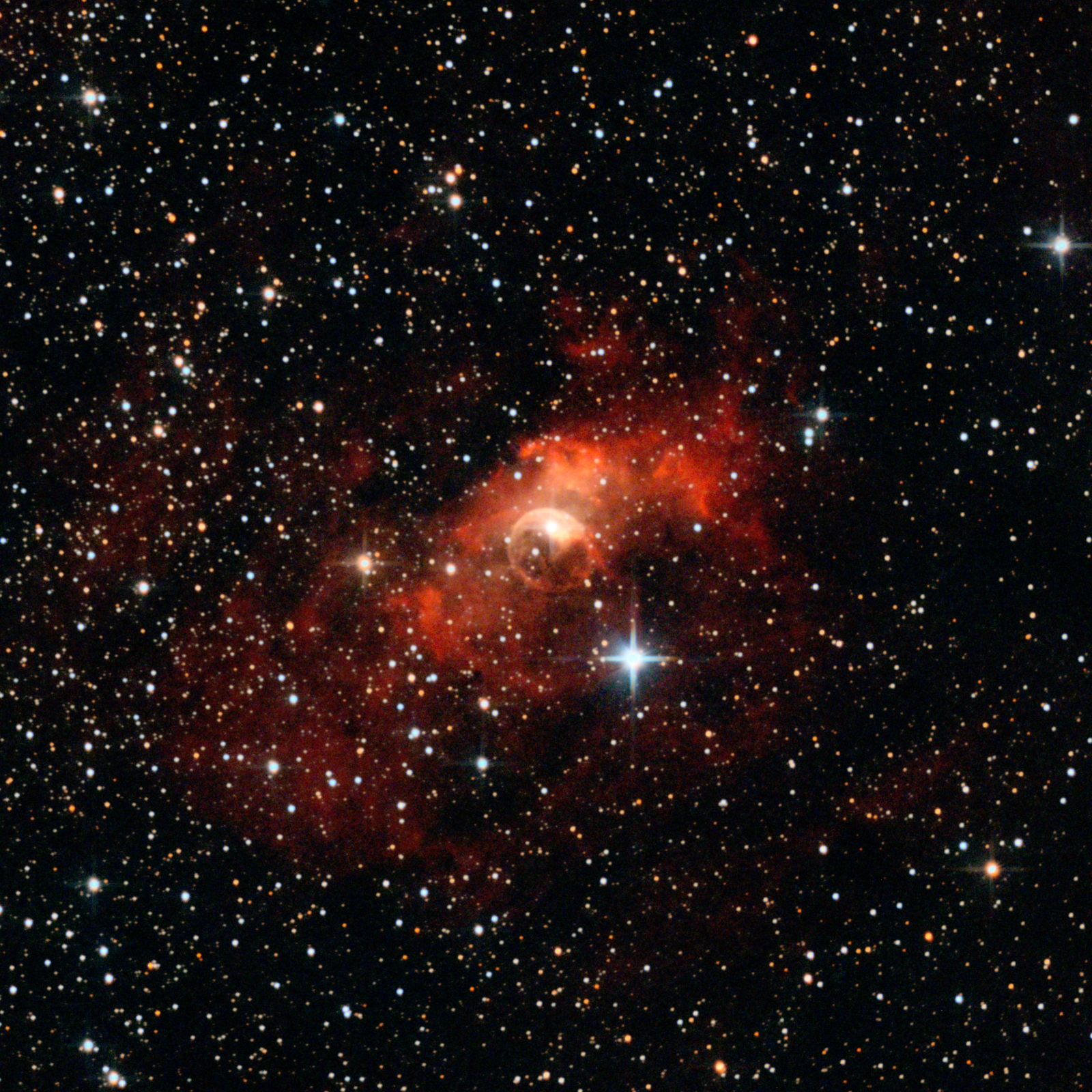

NGC7635, THE BUBBLE NEBULA on 2023-08-03
NGC7635, also known as the Bubble Nebula, Sharpless 162,
or Caldwell 11, is an H II region emission nebula in the constellation
Cassiopeia. The "bubble" is created by the stellar wind from a massive hot, 8.7
magnitude young central star, SAO 20575 (BD+60°2522). In this photo it is the
brightest star within the buble and located slightly below 12 oclock. The nebula
is near a giant molecular cloud which contains the expansion of the bubble
nebula while itself being excited by the hot central star, causing it to glow.
The star BD+60°2522 has a mass of about 45 times the Sun. Gas in the outer
atmosphere of the star gets so hot that it escapes away into space as “stellar
wind” moving at more than 4 million miles per hour. This outflow sweeps up the
interstellar gas in front of it, forming the outer edge of the bubble much like
a snowplow piles up snow in front of it as it moves forward. Astronomers
calculate that the star was born with about 60 times the sun’s mass and has shed
one quarter of its material in this mass-loss wind. As the surface of the
bubble’s shell expands outward, it pushes into denser and higher-pressure
regions of gas on one side of the bubble. This imbalance makes the star appear
dramatically off-center from the bubble. The Bubble Nebula is 7,100 light-years
from Earth in the constellation Cassiopeia, and was discovered in 1787 by
William Herschel, a prominent British astronomer. The bubble is 7 light-years
wide. The star BD+60°2522 is about 4 million years old, and in 10 to 20 million
years it will likely detonate as a supernova.